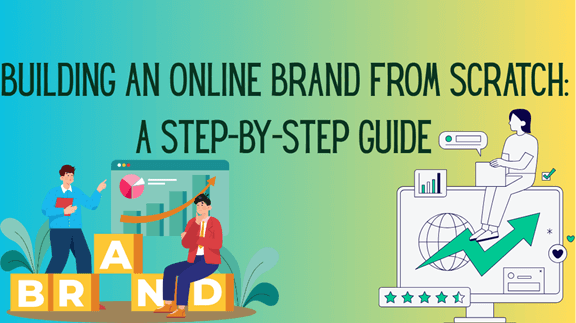In a crowded digital world, simply having a great product or service isn’t enough. To truly stand out, you need a brand: a distinct identity that connects with people, builds trust, and turns casual visitors into loyal followers. But where do you begin when you’re starting with a blank slate? Building a brand from the ground up can feel overwhelming, but it boils down to a series of strategic, manageable steps. This guide will walk you through the fundamentals of creating a memorable online presence.
Before you even think about a logo or a catchy domain name, you must look inward. A strong brand is built on a solid foundation of purpose.
1. Define Your Core Identity: The Why Behind Your Brand
The first step is to answer a few critical questions. Think of this as your brand’s soul-searching phase. What is your mission? Who are you trying to help? What values guide your decisions? Clearly defining your purpose, target audience, and unique value proposition will inform every other choice you make. For instance, a brand targeting eco-conscious millennials will have a completely different identity than one aimed at corporate executives. Get specific about who your ideal customer is, their pain points, their aspirations, and where they spend their time online.
Once you know who you are and who you’re talking to, it’s time to decide how you’ll look and sound. This is where visual and strategic consistency come in: the same way panels like TopTier SMM help brands shape their tone and design across platforms, you should create your own unified system for how your brand presents itself to the world.
2. Choose Your Digital Home Base
You don’t need to be on every single platform. In fact, spreading yourself too thin is a common mistake that dilutes your impact. Instead, focus on the channels where your target audience is most active. A B2B consulting firm will likely find more success on LinkedIn, while a fashion brand would be better suited for visual platforms like Instagram and Pinterest. Your website should serve as the central hub for your brand, a space you completely own and control. From there, select one or two social media platforms to master before expanding.
Simply existing on these platforms isn’t enough. You need to give people a reason to follow, listen, and engage with your brand.
3. Craft Your Visual and Verbal Style
This is where your brand starts to take tangible form. Your visual identity includes your logo, color palette, and typography. These elements should reflect your brand’s personality. Are you modern and sleek, or rustic and warm? Your verbal style, or tone of voice, is just as important. Will you be witty and informal or authoritative and professional? Consistency is key. Whether a customer interacts with your website, a social media post, or an email, the experience should feel cohesive and instantly recognizable.
Your brand now has a soul and a face. The next question is, where will it live online?
4. Create Content That Connects and Provides Value
Content is the currency of the internet. Your goal is to create content that educates, entertains, or inspires your target audience. This could be anything from helpful blog posts and how-to videos to engaging social media updates and insightful case studies. Think about your audience’s problems and create content that offers a solution. This approach, often called content marketing, positions your brand as a helpful expert rather than just a seller. A well-defined content strategy ensures your efforts are focused and effective.
You’ve laid the groundwork, and now it’s time for one of the most critical steps in the digital age: building trust through visibility.
5. Build Social Proof and Initial Engagement
A brand with no followers or interaction can feel like an empty store; it makes potential customers hesitant. Social proof is the psychological phenomenon where people assume the actions of others in an attempt to reflect correct behavior. Online, this translates to reviews, testimonials, follower counts, and engagement rates. With studies showing that nearly 90% of consumers trust online reviews as much as personal recommendations, building a credible social presence is no longer a vanity metric but a foundational business asset. Encourage early customers to leave reviews, share user-generated content, and focus on creating conversations to kickstart your community.
Frequently Asked Questions
How long does it take to build a brand online?
There is no set timeline, as it depends on factors like your industry, consistency, and budget. However, you can expect to see initial traction within 6-12 months of consistent effort. Building a truly strong, recognizable brand is a long-term commitment that can take years.
What is the biggest mistake new brands make?
The most common mistake is inconsistency. This includes using different logos or colors across platforms, having a fluctuating tone of voice, or posting content erratically. A consistent brand experience is essential for building recognition and trust with your audience.
Do I need a big budget to start building my brand?
No. While a larger budget can accelerate growth through advertising, the core elements of branding—defining your mission, creating a visual identity, and producing valuable content—can be done with more time and creativity than money. Many successful brands started with a grassroots approach focused on organic growth.
How do I measure the success of my branding efforts?
Success can be measured through both qualitative and quantitative metrics. Quantitatively, you can track website traffic, social media engagement rates, follower growth, and brand mentions. Qualitatively, pay attention to customer feedback, comments, and the overall sentiment surrounding your brand online.
